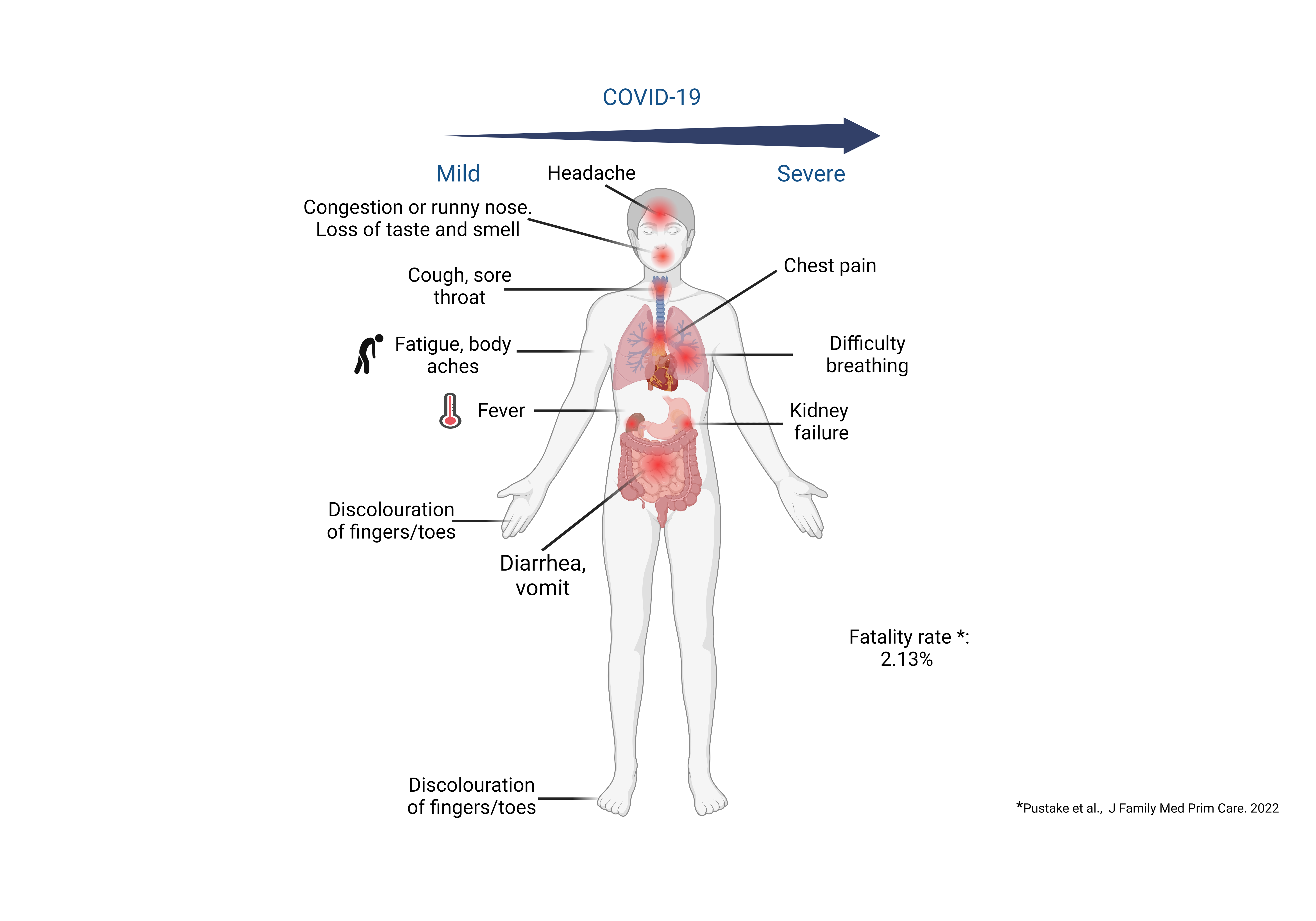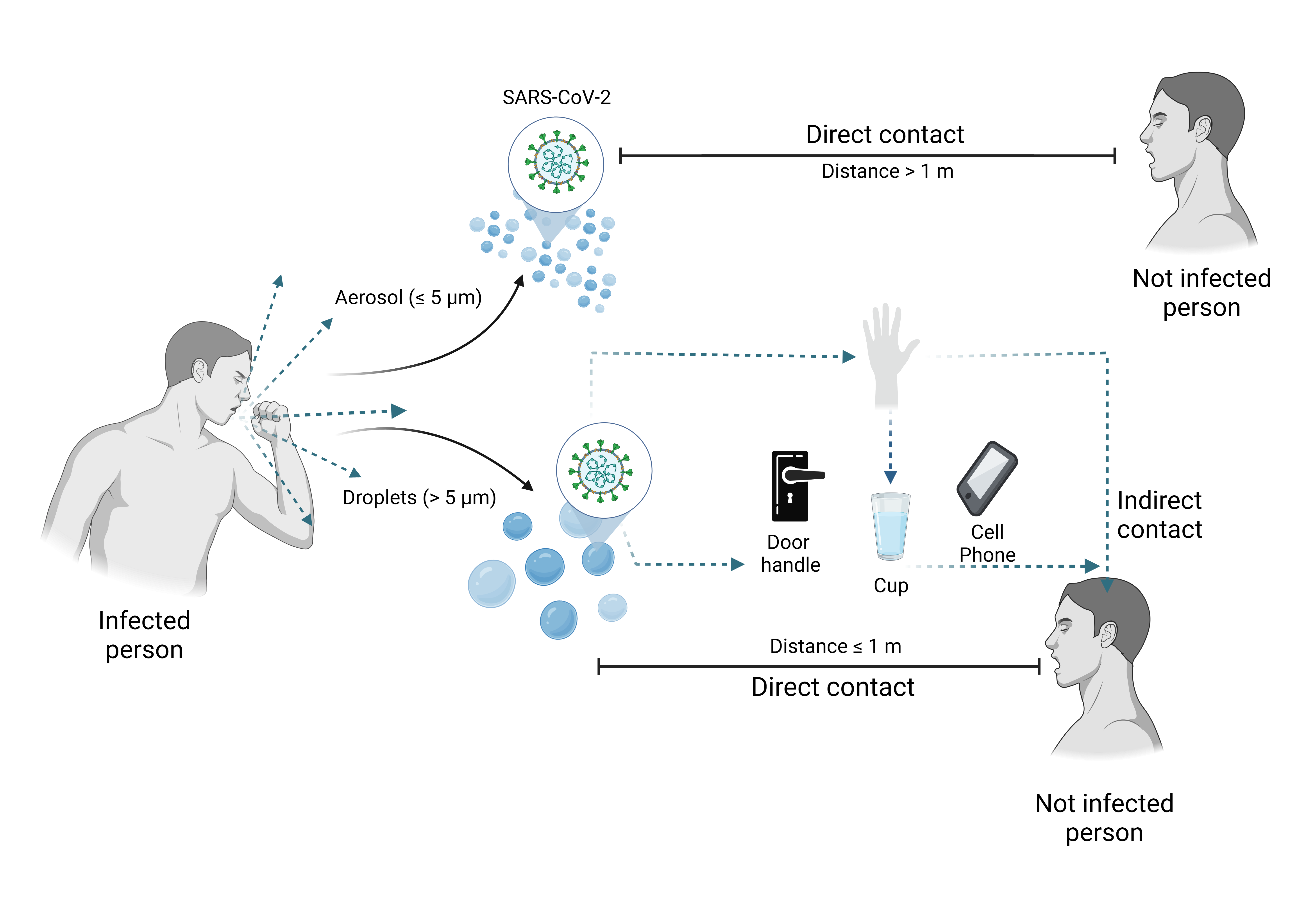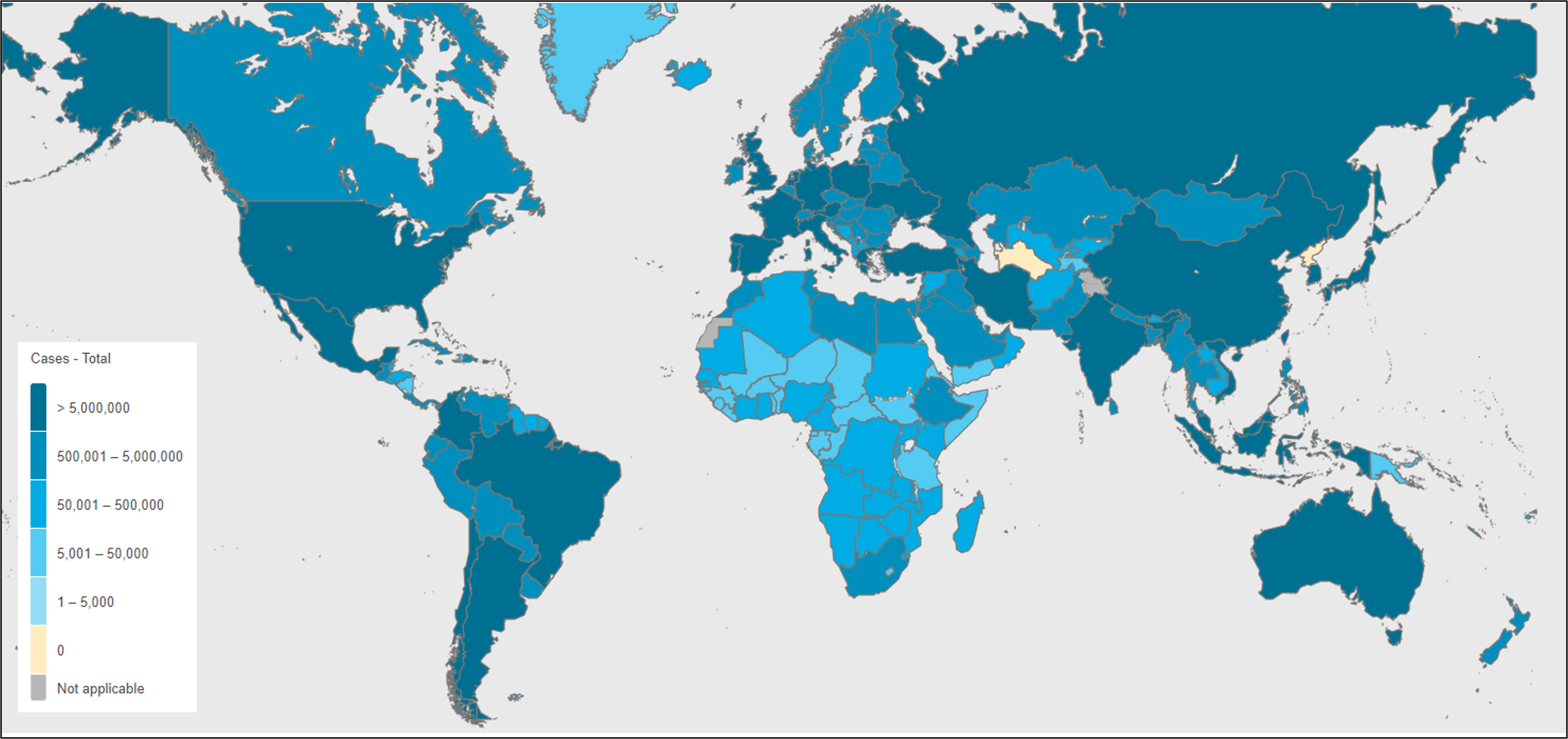
SARS-CoV-2 is the biological agent responsible for the coronavirus disease 2019 (COVID-19).
COVID-19 symptoms vary widely, ranging from mild to severe illness.
Symptoms may appear 2-14 days after exposure to the virus.
Both mild and severe symptoms can affect anyone. But there is higher risk for severe illness in older individuals with underlying medical conditions (Heart disease, lung disease, diabetes).

Primarily spreads through respiratory droplets produced when an infected person coughs, sneezes, talks, or breathes.
Close contact with infected individuals within a distance of less than 1 meter (direct droplet transmission).
Can also spread via aerosols (small respiratory particles) in the air, especially in poorly ventilated indoor spaces, even at distances greater than 1 meter (airborne transmission).
Indirect contact transmission possible through touching contaminated surfaces or objects and then touching the face (e.g., eyes, nose, mouth).
Proper hand hygiene and surface disinfection are essential to reduce indirect transmission risk.

The virus caused a worldwide pandemic, affecting millions of people and leading to significant disruptions in healthcare systems and economies.
The virus’s ability to cause severe illness in vulnerable populations has strained healthcare systems worldwide, leading to overcrowding of hospitals and intensive care units.
SARS-CoV-2 undergoes mutations, leading to the emergence of new variants.
Some variants have shown increased transmissibility, affecting the speed of spread during subsequent waves.
Variant waves can lead to changes in the severity of illness and effectiveness of treatments and vaccines.